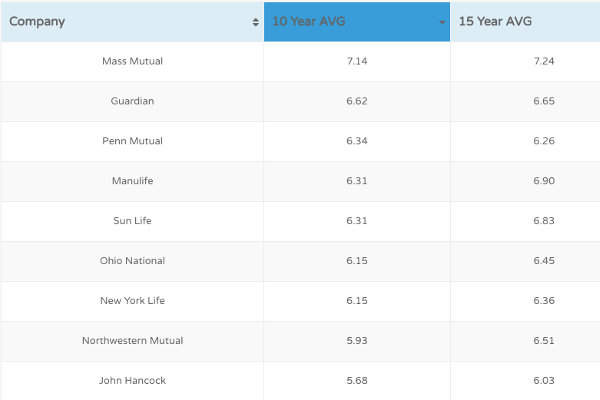Whole life insurance is a popular choice for individuals seeking long-term financial protection and benefits. One of the key features that make whole life insurance unique is the potential for dividend payments. Dividends are essentially a share of the profits earned by the insurance company, which can be paid out to policyholders. In this blog post, we will explore the concept of whole life insurance dividend rates and how they impact policyholders.
Click below to get a Quote Now
Get Me A Quote
Click below to get a Quote Now
Get Me A Quote
Understanding Dividends in Whole Life Insurance
Dividends in whole life insurance are not guaranteed, but they are a valuable feature that can provide policyholders with additional benefits. These dividends are typically paid out to policyholders annually and can be used in various ways, such as reducing premiums, increasing cash value, or purchasing additional coverage.Factors Influencing Dividend Rates
The dividend rates in whole life insurance are influenced by several factors. Insurance companies consider their financial performance, investment returns, mortality experience, and operating expenses when determining dividend rates. Additionally, the type of whole life insurance policy and its participation features can also affect the dividend rates.Impact on Cash Value Accumulation
Dividend payments can significantly impact the cash value accumulation within a whole life insurance policy. When dividends are paid, policyholders have the option to reinvest them into the policy, thereby increasing the cash value over time. This can provide a potential source of funds for future needs or even serve as a supplemental retirement income.Grow wealth, protect life. Unlock dividends today!
Click below to get a Quote Now
Get Me A Quote
Premium Reduction and Paid-Up Additions
One way policyholders can utilize dividend payments is by using them to reduce their premium payments. By applying dividends towards premium costs, policyholders can effectively lower the out-of-pocket expenses associated with their policies. Alternatively, policyholders can choose to receive paid-up additions, which are additional coverage units purchased with the dividend payments, thereby increasing the death benefit.Long-Term Policy Benefits
The impact of dividend rates becomes more significant over the long term. As policyholders consistently receive dividends and reinvest them, the cash value and death benefit of the policy can grow substantially. This can provide financial security and peace of mind for policyholders and their beneficiaries.Company Selection and Dividend Track Record
When considering whole life insurance, it is essential to evaluate the dividend track record of the insurance company. Companies with a history of consistent and competitive dividend payments are generally preferred. Policyholders should also consider the financial strength and reputation of the insurance company, as it directly affects the ability to pay dividends in the future.Policyholder Flexibility
Whole life insurance policies offer flexibility in how dividends are utilized. Policyholders have the freedom to choose how they want to allocate their dividends, whether it is towards premium reduction, cash value growth, or additional coverage. This flexibility allows policyholders to customize their policies based on their changing financial goals and circumstances.Conclusion
Dividend rates play a significant role in whole life insurance policies and can have a lasting impact on policyholders' financial well-being. They provide an avenue for policyholders to enhance the cash value of their policies, reduce premiums, and increase the death benefit. When considering whole life insurance, it is crucial to understand how dividend rates are determined, evaluate the track record of insurance companies, and consider long-term benefits. By leveraging dividend payments effectively, policyholders can maximize the value and potential of their whole life insurance policies.Grow wealth, protect life. Unlock dividends today!
Click below to get a Quote Now
Get Me A Quote




